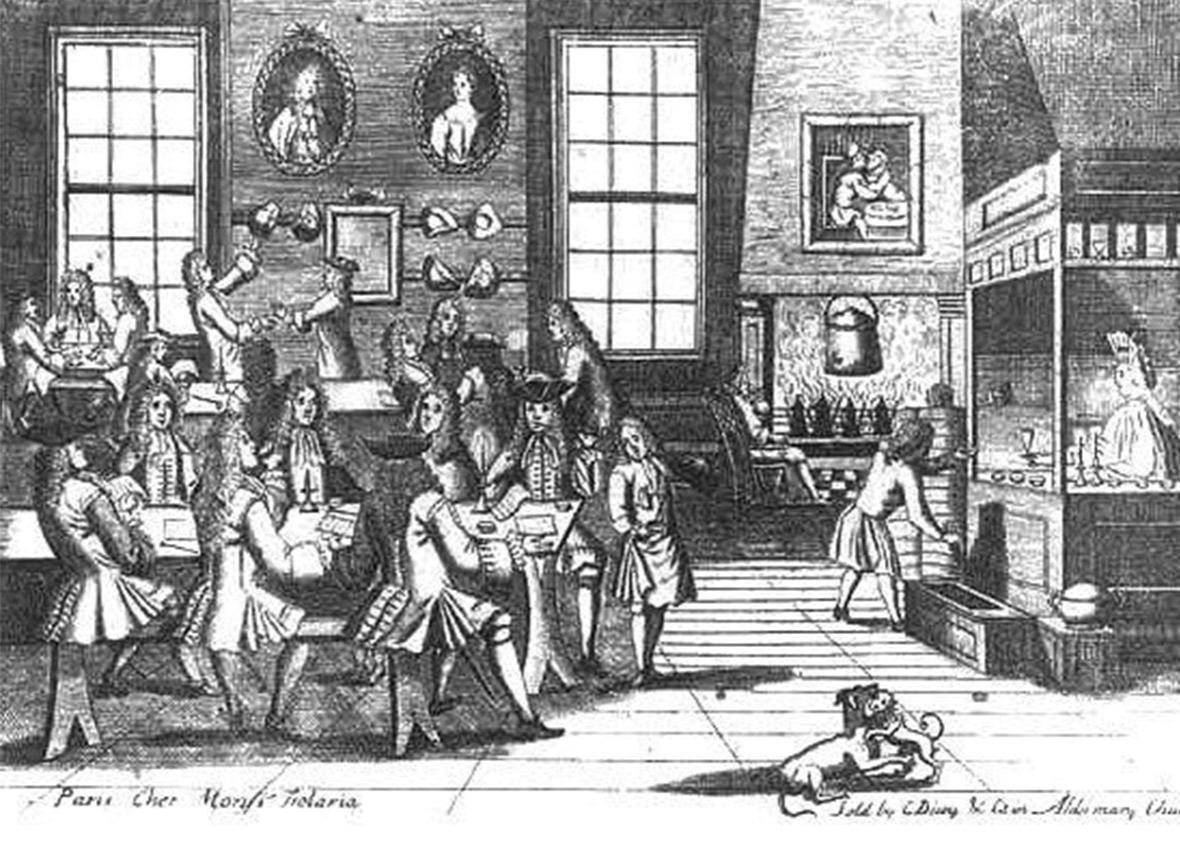This article is part of A Year of Great Books, a Slate Academy. To learn more, read Laura Miller’s introduction to the series, or visit Slate.com/GreatBooks.
Add Laurence Sterne to the list of authors vindicated after an early rejection. In 1759, Sterne pitched Tristram Shandy to Richard Dodsley, who ran a London firm with his brother, James. At that time, authors sold their copyright to their publishers. Sterne wanted 50 pounds for the first two volumes; Dodsley didn’t bite. But by early 1760, Tristram Shandy was “the Fashion” in the capital, as Sterne crowed in a letter to Catherine Fourmantel, a singer with whom he was canoodling. On an impromptu visit to the city, Sterne met with James Dodsley, who happily forked over 250 pounds for the first two volumes of the novel and another 380 pounds for the unfinished third and fourth volumes, leading Sterne to boast to friends that he felt like “the richest man in Europe.”
A hundred years earlier, such good fortune wouldn’t have been possible. The runaway success of Tristram Shandy resulted from one of the greatest cultural booms in Western history, commonly known as the age of print. But it wasn’t Johannes Gutenberg’s printing technology that led to the blossoming of thousands of new magazines, pamphlets, and books in 18th-century England. It was politics—specifically, the lapsing of a law called the Licensing Act in 1695.
As John Brewer writes in his delightful The Pleasures of the Imagination: English Culture in the Eighteenth Century, the Licensing Act granted 20 London printers a stranglehold on commercial publishing in the nation. When those protections fell away (as a result of what Brewer describes as “something of a legislative accident”), scores of new printers popped up in the provinces.
The results were epochal. Local newspapers sprouted all over the British hinterlands, fostering literacy, creating hungry readers from a wide cross-section of society, and most importantly for 18th-century authors, spreading the word, through advertising and reviews, about books. Printers, publishers, and booksellers, even more than writers, helped make 18th-century England the envy of European intellectuals like Voltaire, who praised it as a society in which “whoever has talents is a great man.” The relative political freedom in England created a culture where the arts, once reserved for the aristocracy, were, in Brewer’s words, “aimed for a public and were organized commercially rather than confined to a few.”
Like most booms, this one created opportunities for people outside the old system. Sterne was an obscure Yorkshire clergyman before Tristram Shandy made him a prosperous celebrity author, but others rose from even humbler roots. Samuel Richardson, probably the most popular English novelist of the century, began as the son of a country joiner; he worked as a proof corrector, printer, bookseller, editor, and publisher before turning to novel-writing at 50. Richard Dodsley, the London bookseller-publisher to whom Sterne at first applied in vain, was a former footman. Women too found ways to make a living from their pens and gain some economic independence.
People who wanted to sample the new publications had numerous options. Books were expensive, but for a modest fee you could join a circulating library. Small-town book clubs pooled their resources to purchase and share the titles that most intrigued them. Provincial booksellers often rented out their books because the small selection they kept on hand made pre-purchase browsing impractical. Long before Kickstarter, authors took up subscription campaigns to fund more ambitious projects. Most vibrant of all were the coffee houses, which made books, periodicals, and newspapers available for reading on their premises, typically for a small subscription. In 1773, an Irish clergyman named Thomas Campbell rejoiced that he paid only one shilling for a year’s right to read a large collection of books kept by the famous Chapter Coffee House, a hotspot for the publishing trade. Then he sat down next to a tinsmith, “a specimen of English freedom … in his apron & some of his saws under his arm,” who ordered a glass of punch and a copy of the paper, “both of which he used with as much ease as a Lord.”
When Dodsley turned Sterne down, a local bookseller in York published the first two volumes of Tristram Shandy. It became a regional hit, but the novel really caught on when the celebrated London actor David Garrick (later to become one of Sterne’s closest friends and a name frequently mentioned in Tristram Shandy) began to talk it up. Garrick was quite the tastemaker, and his recommendation was the 18th-century equivalent of a sought-after blurb.
But how did the actor come to read the book in the first place? Call it word of mouth. Garrick received a letter from a friend who was spending the winter in York and mentioned “two Volumes just published here which have made a great noise, and have had a prodigious Run.” The friend was Catherine Fourmantel, Sterne’s paramour, and her hot tip to Garrick was likely written at his urging in a shrewd bit of authorial self-promotion. There are some aspects of publishing that never change.
